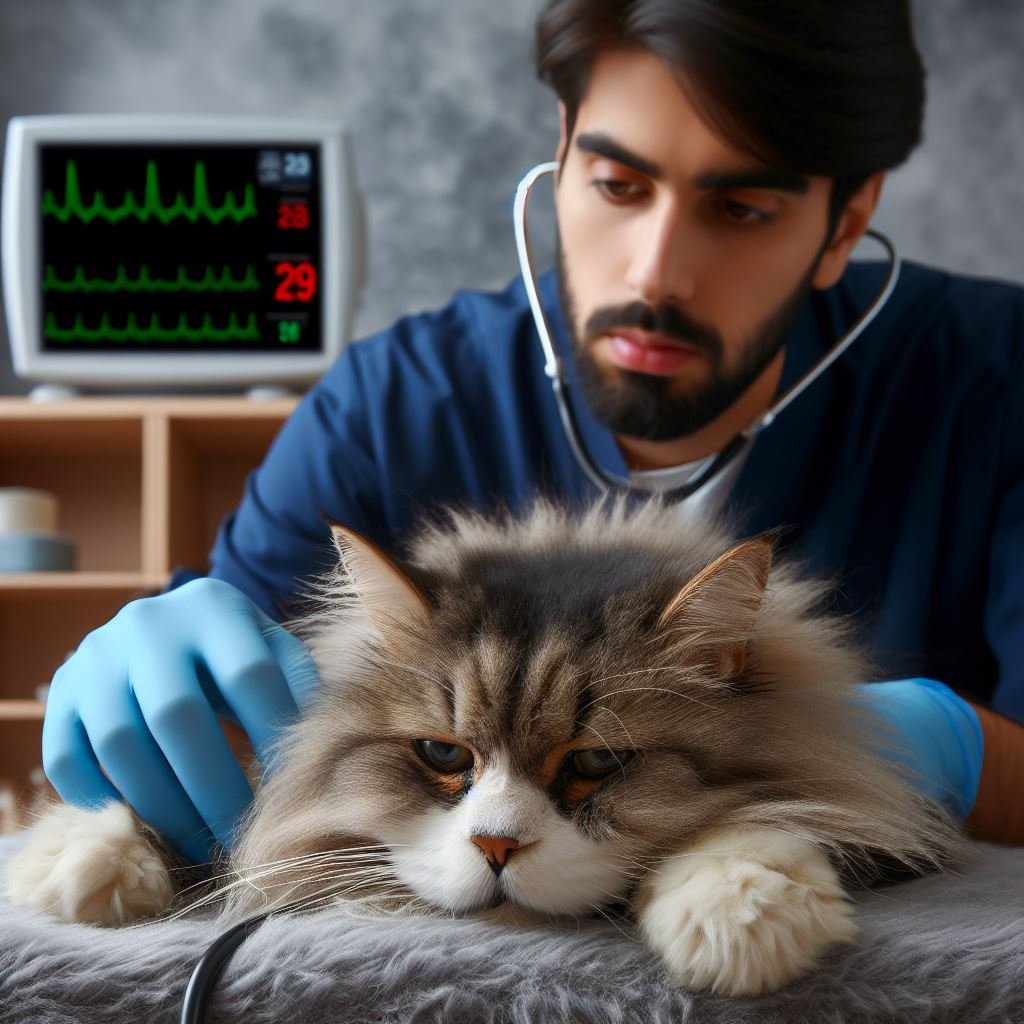
Table of Contents
ToggleUnderstanding the Stages of Parvo in Cats
What is Parvovirus in Cats?
Parvovirus, commonly known as parvo, is a highly contagious viral infection that affects cats. It belongs to the Parvoviridae family and can manifest in two main forms in felines: feline panleukopenia virus (FPV) and feline infectious enteritis (FIE). FPV primarily attacks the bone marrow and lymphoid tissues, leading to a decrease in white blood cells (leukopenia). FIE predominantly targets the gastrointestinal tract, causing severe vomiting and diarrhea.
Transmission of Parvovirus
Parvovirus in cats spreads through direct contact with infected cats or their bodily fluids, as well as through contaminated environments such as food bowls, litter boxes, or bedding. Kittens and unvaccinated cats are particularly vulnerable to contracting the virus.
Stages of Parvovirus Infection
Stage 1: Incubation Period
The first stage of parvo in cats is the incubation period, which typically lasts 3 to 10 days after exposure to the virus. During this time, the virus begins replicating within the cat’s body without causing noticeable symptoms.
Stage 2: Early Symptoms
The early symptoms of parvovirus infection start to appear during this stage. Cats may exhibit lethargy, loss of appetite, fever, and dehydration. Vomiting and diarrhea, often containing blood, are common signs due to the virus’s impact on the gastrointestinal tract.
Stage 3: Advanced Symptoms
As the infection progresses, more severe symptoms may develop. Cats may become severely dehydrated, leading to weakness, sunken eyes, and dry, tacky gums. The immune system weakens, making the cat susceptible to secondary bacterial infections.
Stage 4: Recovery or Critical Condition
In some cases, affected cats may begin to show signs of recovery with appropriate veterinary care, including fluid therapy, anti-nausea medications, and supportive care. However, if the disease progresses unchecked, it can lead to a critical condition where multiple organ systems fail, ultimately resulting in death.
Diagnosing Parvovirus in Cats
Veterinarians diagnose parvovirus in cats based on clinical signs, physical examination findings, and laboratory tests. A fecal test can confirm the presence of the virus, while blood tests may reveal leukopenia (low white blood cell count) and other abnormalities.
Treatment and Management
There is no specific antiviral medication to treat parvovirus in cats. Treatment focuses on supportive care to manage symptoms and prevent complications. Intravenous fluids help correct dehydration and maintain electrolyte balance. Anti-nausea medications and appetite stimulants may be administered to improve the cat’s condition.
Prevention Measures
The most effective way to prevent parvovirus in cats is through vaccination. Kittens should receive a series of vaccinations starting at around 6 to 8 weeks of age, with boosters administered every 3 to 4 weeks until they reach 16 weeks of age. Adult cats should receive regular booster shots according to their veterinarian’s recommendations.
Conclusion
Parvovirus is a serious threat to cats, particularly kittens and unvaccinated individuals. Understanding the stages of parvo infection and recognizing the associated symptoms are crucial for prompt diagnosis and treatment. Vaccination remains the cornerstone of prevention, significantly reducing the risk of contracting this potentially deadly virus.
By staying informed and working closely with your veterinarian, you can help protect your feline companions from the devastating effects of parvovirus.
Frequently Asked Questions (FAQs)
1. How long does each stage of parvo last in cats?
The duration of each stage of parvovirus in cats can vary. The incubation period typically lasts 3 to 10 days after exposure. Early symptoms may appear within a week of infection. The advanced symptoms stage can persist for several days to a week or longer depending on the severity of the infection and the cat’s response to treatment.
2. What are the signs that a cat is recovering from parvo?
Signs that a cat is recovering from parvovirus include improved appetite, decreased vomiting and diarrhea, increased energy levels, and a return to normal behavior. However, recovery can be gradual, and close monitoring by a veterinarian is essential.
3. Can an adult cat get parvo?
Yes, adult cats can contract parvovirus if they have not been properly vaccinated or if they are exposed to the virus. While kittens are more susceptible, adult cats can also become infected, especially if their immune system is compromised.
4. How can I help prevent the spread of parvovirus in a multi-cat household?
To prevent the spread of parvovirus in a multi-cat household, ensure that all cats are vaccinated according to your veterinarian’s recommendations. Keep living areas clean and disinfect regularly, especially if there is an infected cat. Minimize contact between infected and uninfected cats until the infected cat has fully recovered.
5. What should I do if I suspect my cat has parvovirus?
If you suspect your cat has parvovirus, seek veterinary care immediately. Early diagnosis and treatment are crucial for improving the chances of recovery. Your veterinarian can perform tests to confirm the diagnosis and recommend appropriate treatment options.
6. Can parvovirus in cats be fatal?
Yes, parvovirus in cats can be fatal, especially if not treated promptly and aggressively. The virus can cause severe damage to the gastrointestinal tract and weaken the immune system, leading to life-threatening complications. Timely veterinary intervention is essential to maximize the chances of survival.
These FAQs aim to provide helpful information and address common concerns related to parvovirus in cats, focusing on understanding the stages of the disease, prevention strategies, and the importance of veterinary care for affected cats. If you have specific concerns about your cat’s health or vaccination status, consult with your veterinarian for personalized guidance and recommendations.
